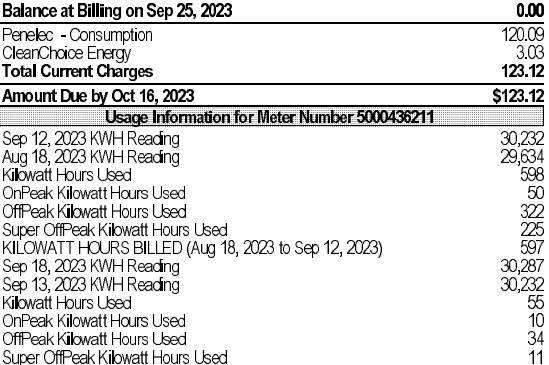Got my first full-month electric bill using “Time of Use” billing for electricity. I don’t have a family at home using electricity during the day, so I had that in my favor. Some evenings I might need to do a load of laundry (electric dryer) or cook (electric stove top & oven), etc., but for the most part I’m either still at work or out of the house most of the hours when the “peak” billing rate is happening.
Throughout October I barely had to run the air conditioning, but I did run the blower fan almost every night, all night, to circulate air.
I put the car on a schedule to charge after 11PM. It’s always done before 6 AM, even when I’m below 10% to start.
My first full month of “Time of Use” billing was $86.01. Compare directly to October of ’22 when it was $50.96 without an electric car to charge.
…
I didn’t have the electric car last year. That saves me $250 in fuel costs. My new monthly combined total is over $200 LOWER than last year!
I paid $30 more in electricity than I did last October, but I drove my car 70 miles a day 5 days a week, and bought $0 in gas (petrol)!

